39 Vampire Bat Facts (All 3 Species) Tiny, Heat-Sensing Flying Mammals
Are vampire bats real? Yes, but don’t be scared. In this post, you’ll learn about their habitat, diet, size, hunting methods and more. Do they drink human blood? Do they carry diseases? What happens if a vampire bat bites you? Keep reading to learn the answers to all your questions and more with these vampire bat facts.
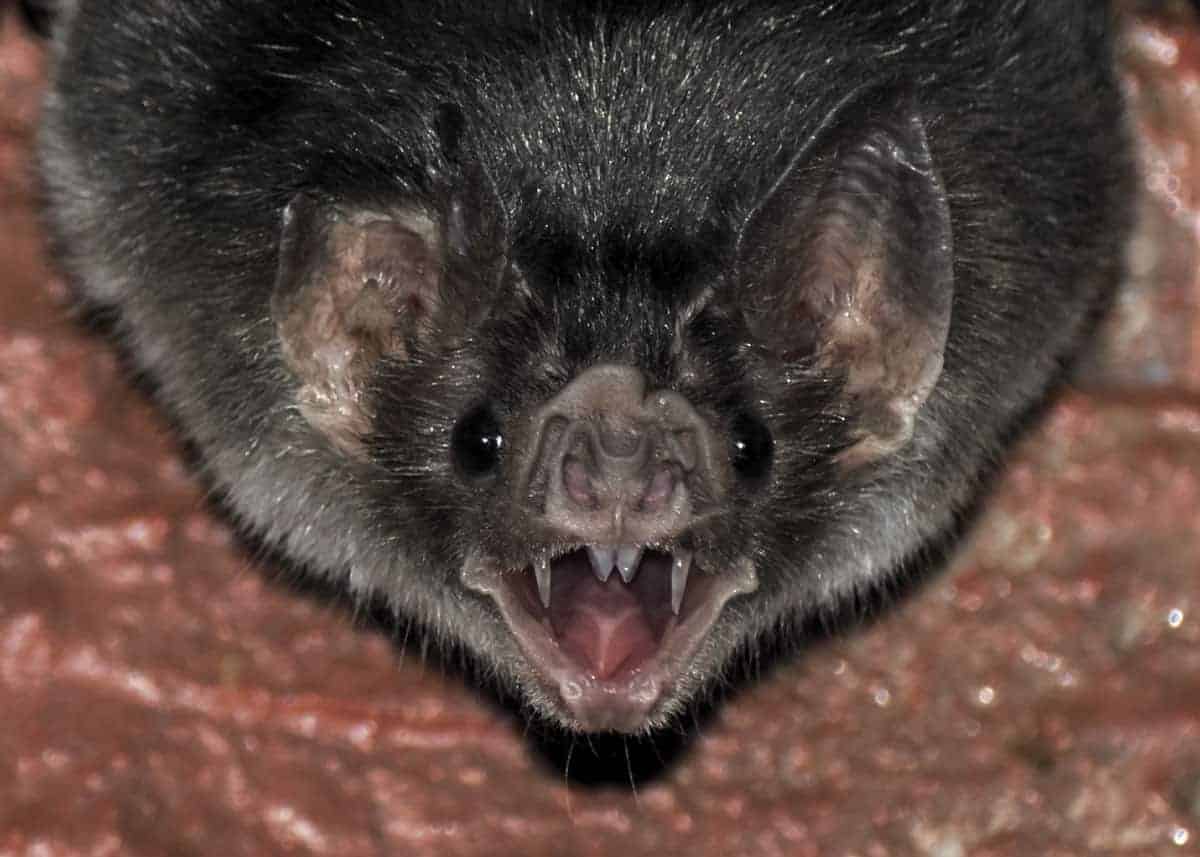
Travel tip: If you’re traveling to the Amazon, you should bring a camera with a good zoom and a decent pair of binoculars. This will increase the odds of spotting and shooting a vampire bat in the jungle.
Guide to Vampire Bats
Vampire Bat Overview
- Latin name(s): Desmodus rotundus; Diphylla ecaudata; Diaemus youngi
- Range: Mexico, Central and South America
- Population Status: Least Concern
- Size: Height: 2.75 to 3.75 inches (7 to 9.5 cm); Weight: 0.7 to 2 ounces (19 to 57 g)
- Wingspan: 5.9 to 7 inches (15 to 18 cm)
- Diet: Blood of birds and animals
- Bizarre facts: They have heat sensors and survive only on blood.
- Where it lives in Ecuador: Amazon rainforest region
1. Where does the vampire bat live?
The vampire bat (all three species) is native to the Americas, living in Mexico and the countries of Central and South America, especially Brazil, Chile, Ecuador, Uruguay and Argentina.
2. Where do vampire bats live in Ecuador?
In Ecuador, vampire bats live in the Amazon region, which is in the eastern part of the country.
A couple of places where they are found more abundantly are the Arenillas Ecological Reserve and Yasuni National Park, where their food sources (large mammals like deer and tapirs) are protected.
Learn more about the world’s largest rainforests.
3. What is the habitat of the vampire bat?
Vampire bats specifically live in tropical and subtropical climates where it’s warm all year round.
Like other bat species, vampire bats prefer living in pitch dark places like caves, abandoned buildings and hollow trees. They sleep by day, hanging out upside-down together in colonies that range from just a few individuals to more than a thousand.
Most colonies are made up of predominantly females and their offspring plus a few adult males that are known as “resident males.”
4. How many species of vampire bats?
There are only three existing species of vampire bats in the whole world, and they are as follows:
- Common vampire bat (Desmodus rotundus)
- White-winged vampire bat (Diaemus youngi)
- Hairy-legged vampire bat (Diphylla ecaudata)
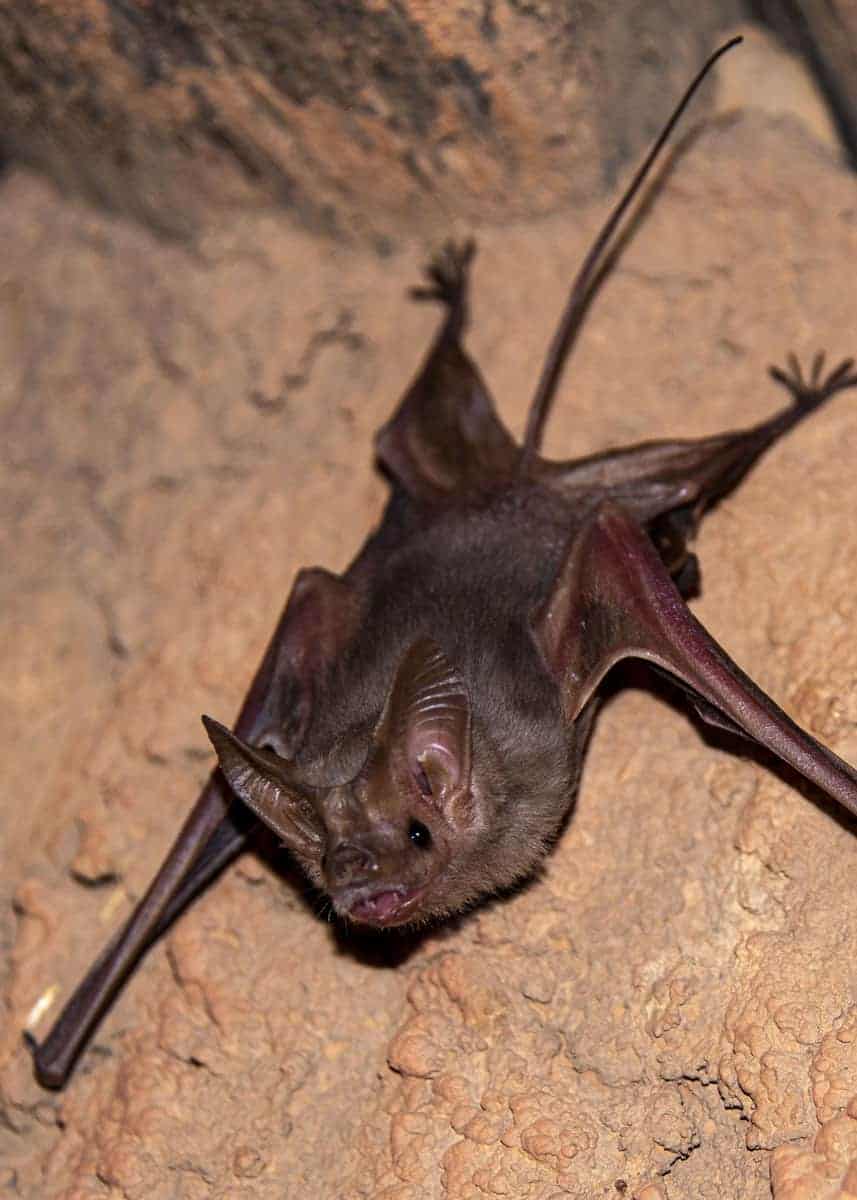
5. What is the vampire bat’s Latin name?
There are three species of vampire bats.
Here are all three:
1. Common vampire bat: This species has the widest range of all vampire bats. It is found from northern Mexico as far south as Uruguay, central Chile, and northern Argentina in South America.
- Class: Mammalia
- Order: Chiroptera
- Family: Phyllostomidae
- Subfamily: Desmodontinae
- Genus: Desmodus
- Species: D. rotundus
2. White-winged vampire bat: This species is predominantly found in South America, although it can also be found in Central American countries including Mexico, Panama, Guatemala, and Costa Rica.
- Class: Mammalia
- Order: Chiroptera
- Family: Phyllostomidae
- Subfamily: Desmodontinae
- Genus: Diaemus
- Species: D. youngi
3. Hairy-legged vampire bat: This species also has a wide range, and is found from Belize and Mexico and as far south as Brazil.
- Class: Mammalia
- Order: Chiroptera
- Family: Phyllostomidae
- Subfamily: Desmodontinae
- Genus: Diphylla
- Species: D. ecaudata
6. What does a vampire bat look like?
Thanks to movies and fictional books, vampire bats are often associated with a scary image, but in reality, they are rather cute.
You might be surprised to know that an adult vampire is only about three inches in height, which is about the size of your thumb.
It only weighs about two ounces and has a wingspan of about six or seven inches.
With its brown/gray fur coat, small ears, short tail, strong hind legs, and little cone-shaped muzzle, a vampire bat almost looks adorable enough to take home as a pet.
Really, the only scary-looking thing about the vampire bat is its sharp front teeth that it uses for feeding.
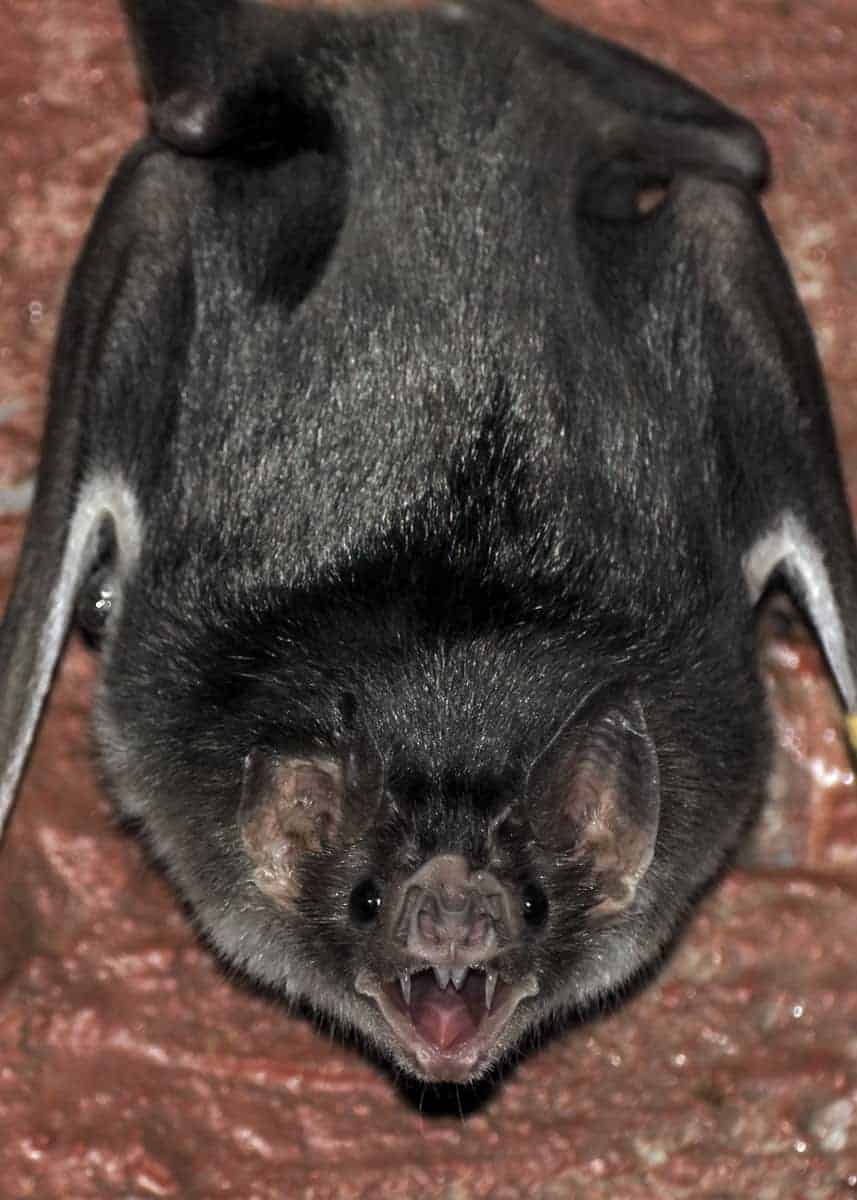
7. How big are vampire bat teeth?
Well, since vampire bats are only about the size of an adult’s thumb, you can see how their teeth would be pretty tiny. In fact, their back teeth are smaller than other bats.
But vampire bat teeth are super sharp. Vampire bats use their razor-sharp incisor teeth to shave the hairs on their victim’s skin before making a teeny cut of about 7 millimeters from which they then lap up blood.
Vampire bat teeth are so sharp that even ones in museum collections must be handled carefully to avoid injury.
8. 5 Vampire bat adaptations
Vampire bats have some pretty cool tricks that allow them to feed.
These adaptations include:
- Strong hind legs and elongated thumbs to run, jump and run to take off quickly after feeding
- Anticoagulant saliva that prevents the clotting and allows blood to flow freely for drinking
- Heat sensors on their noses enable them to locate warm-blooded animals as well as skin locations on their prey that cover blood vessels
- Keen eyesight that allows the bats to see a cow from a distance of more than 400 feet (130 m) in the dark
- Excellent hearing and specialized neurons that help distinguish the breathing sounds of different animals
9. How did the vampire bat get its name?
Vampire bats get their name from mythical vampires, the legendary night creatures of medieval European folklore which survive by feeding off the blood of humans.
However, people didn’t begin associating vampires with vampire bats until after Europeans began arriving in the Americas and discovering these bats that fed on blood.
10. What came first vampires or vampire bats?
Vampires came before vampire bats. Vampire bats are named after the mythical vampire.
Myths about vampires existed long before the discovery of vampire bats, as far back as the late 17th-century.
Vampire bats were not officially described or documented by science until the early 1800s.
11. Are vampire bats friendly or aggressive?
It might surprise you to know that vampire bats are caring, social creatures. For the most part, they are not territorial with one another because they find security in hanging out and engaging in grooming habits with each other.
Because vampire bats can die if they go more than a couple of days without feeding, they will also share their “food” with other bat members by regurgitating it for them.
Contrary to their frightening persona, vampire bats are not aggressive toward humans. Yes, they have been known to drink blood from sleeping humans, but they don’t attack humans. They can even be tame and friendly toward people.
12. How long do vampire bats live?
In the wild, vampire bats live between 8 and 12 years. They can live up to 19 years in captivity.
13. What eats a vampire bat? Predators and Threats
Snakes and large birds of prey such as eagles and hawks are the vampire bat’s most common predators.
Other threats come from humans and include habitat loss, deforestation, guano mining and roost disturbance due to cave exploring.
Farmers sometimes kill vampire bats to protect their livestock from possible diseases like rabies that can be contracted from vampire bat bites.
14. Are vampire bats real?
Yes, if you’ve read this far, you know that vampire bats are real. They aren’t just spooky animals in fictional books and horror movies. They are genuine, documented living species of bats.
15. What are false vampire bats?
False vampire bats are bats that were once believed to drink blood.
However, scientists now know that these bats feed on insects, birds, and small rodents. They are larger than true vampire bats and feature a prominent leaf nose and large eyes and ears.
These false vampire bats include these three species:
- Spectral bat (Vampyrum spectrum), also known as the great false vampire bat and is found in Mexico
- Ghost bat (Macroderma gigas), also known as the Australian false vampire bat
- Lesser false vampire bat (Megaderma spasma), which lives in southern and Southeast Asia
16. Are vampire bats extinct?
Besides the three living species bats that this article discusses, there are also four species of vampire bats that have become extinct.
These extinct vampire bats include:
- Giant vampire bat (Desmodus draculae), the largest vampire bat to have ever lived
- Desmodus archaeodaptes, the oldest of the vampire bat species
- Desmodus puntajudensis, from Cuba
- Desmodus stocki, from Florida
17. Is the vampire bat endangered?
No, the vampire bat is not endangered.
While it does face threats, the International Union for Conservation of Nature (IUCN) Red List gives this species status of Least Concern because its population is stable.
18. What do vampire bats eat?
Vampire bats feed solely on the blood of birds and animals. In fact, they are the only mammals in the world to live entirely on blood.
Of the three living vampire bat species, the white-winged and hairy-legged vampire bats both feed primarily on the blood of birds.
The common vampire bat feeds on the blood of birds and animals such as horses, cows, and pigs.
19. Why do vampire bats drink blood?
Unlike their cousin species which feed on nectar, pollen, fruit, and insects, vampire bats feed solely on blood.
This remains one of the most fascinating vampire bat facts among many scientists.
Experts propose that their diet adapted for these possible reasons:
- They progressed from feeding on ectoparasites to the host (large mammals).
- They went from eating insects that were drawn to animal wounds to feeding on the actual wounds.
- They were initially nectar-feeders that grew to prefer another type of liquid: blood.
- They were once fruit-eating bats with sharp teeth used for piercing fruit and learned they could bite into animal flesh.
20. How do vampire bats hunt?
Vampire bats wait until it’s fully dark before they hunt for food. They use their gift of echolocation to find prey such as livestock animals by listening for the sound of breathing.
Once they locate a food host, they use special heat sensors in their noses to find a spot on the skin that’s closest to a vein. After making a tiny incision into the skin, they lap up the blood from the wound.
You could say that vampire bats are nature’s stealth feeders. They just want to sneak up quietly on a sleeping animal, take a tiny bite out of its skin and drink about an ounce of its blood before quietly flying back to its cave. Most of the time, the animal never even knows it was visited in the night by a vampire bat.
21. What other names does the vampire bat have?
Because there are three species of vampire bats, you might read or hear their common names which include: white-winged bat, the hairy-legged bat, and the common vampire bat.
22. Vampire bat reproduction
Compared to other bats and other animals, vampire bats reproduce slowly.
Females are pregnant for about seven months and usually only have one pup per breeding season (usually in the springtime). After giving birth, mothers will care for their pups for about five months.
Baby vampire bats are born without hair but look so adorable with their little round faces, small ears and big eyes.
The babies cling to their mothers’ bellies by using the thumbs in their wings, and they drink milk from their mothers until they’re old enough to drink blood on their own.
Young vampire bats will begin to reproduce around the age of 9 or 10 months.
23. What is the vampire bat’s call?
Vampire bats have been beatboxing long before humans learned to do it for entertainment. They make a variety of sounds that include chirping, clicking, knocking, drumming, squealing and screeching.
24. Are vampire bats loud?
They can be loud, but usually, they make low-energy sound pulses to communicate with one another. If a young vampire bat becomes isolated from its mother, it will call out for her in an ultrasonic sound that is usually not audible to humans.
When a large colony flies out at night together, you might hear the collective sound of their flapping wings.
25. Do vampire bats carry diseases, like rabies?
Yes, vampire bats can carry infectious diseases. They are most often associated with rabies, which can spread to humans and domestic animals.
Most of the instances of people contracting rabies from vampire bats occur in South America.
Experts are currently researching to learn and control the spread of rabies from vampire bats, but it’s believed that less than one-half percent of bats carry rabies. Plus, many infected bats are usually unable to fly because they are disoriented.
There are some reports of them carrying other diseases such as Bartonella, Ebola, and SARS.
26. Where can I see the vampire bat?
You might see vampire bats if you go cave exploring in South America, but it’s best not to disturb them. They aren’t aggressive to humans, but stirring up a colony of vampire bats from their sleep might startle you.
If you’re in North or South America, you may be able to see vampire bats in large zoos such as the Cincinnati Zoo in Cincinnati, USA, or in reserves and national parks such as the Arenillas Ecological Reserve and Yasuni National Park, Ecuador.
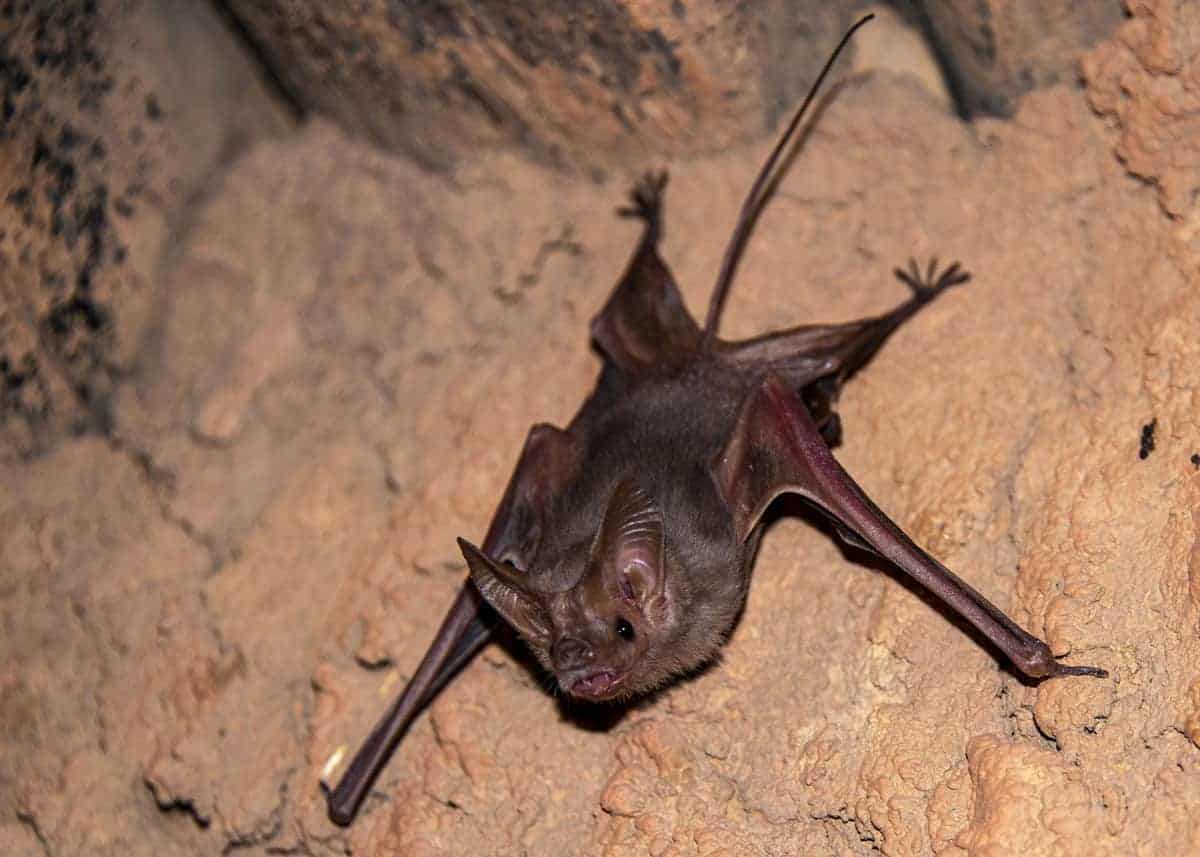
In the Amazon, there is another animal with a similar name. However, the vampire fish is totally unrelated and doesn’t even drink blood.
27. Do vampire bats drink human blood?
Human blood is not the first choice of vampire bats. They prefer the blood of birds and livestock animals.
However, vampire bats have been known to feed on humans if they can’t find food elsewhere or if they happen to come along humans sleeping in their territory.
28. Are vampire bats dangerous?
Vampire bats are dangerous in the sense that some of them do carry diseases, especially rabies. Also, it’s possible that being around collections of their feces (known as guano) can cause a fungal infection known as histoplasmosis.
If you come into contact with a vampire bat (or any other bat!) it’s important to get checked out by a doctor because you can contract a disease from them without being bitten.
29. What happens if a vampire bat bites you?
Depending on whether you’re awake or asleep, you may not even feel it if a vampire bat bites you. They will only drink a small amount of blood which is not enough to hurt a human.
However, if you are bitten by a vampire bat, you should immediately see a doctor and be tested and/or treated for rabies to be on the safe side.
30. Why do vampire bats bite humans?
Vampire bats only bite humans if they can’t find any other source of animal blood or if humans happen to be in their territory when they go searching for food.
For example, if you’re camping outdoors at night close to where a colony of vampire bats lives, there is a small chance you could be bitten by one.
31. Are giant vampire bats real?
Giant vampire bats were real at one time. They are now extinct, but their fossils have been found in several places throughout South America.
Measuring about 30% larger than the current common vampire bats, giant vampire bats are the largest known of their kind to have ever existed. Their fossils indicate that they may have lived as recently as 3,000 years ago.
32. Are bat bites dangerous?
Bat bites could potentially be dangerous because bats are known to carry diseases, especially rabies. You don’t have to be bitten to catch a disease from a bat. Just being in close contact with one can put you at risk.
A woman in Wyoming USA, died several days after waking up to a bat on her neck, even though she had no bite wounds.
33. Are vampire bats in the United States?
Outside of captivity in zoos, vampire bats don’t live in the United States. They have been found as far north as 170 miles (280 km) south of the Mexico-US border.
But that doesn’t mean they never will. Researchers say that due to climate changes, the range of the vampire bat is slowly spreading north, and vampire bats could arrive in southern US states (like Texas and Florida) within a few decades.
34. Will a bat bite you while sleeping?
It’s possible for a bat to bite you while you are sleeping if it has access to your sleeping arrangements. For example, if you are camping outside or if your bedroom window is left open at night, you are at risk.
Bats have been known to sneak up on livestock and humans while they are sleeping and take a nibble out of them without even waking up their victims.
35. Why are bats associated with vampires?
Many believe that bats became associated with vampires after the publication of Bram Stoker’s novel, Dracula, in 1897.
But the connection began long before when Europeans first arrived in the Americas and discovered the bat species that feed on blood. It was then that more people began linking the bats with the mythical creature.
36. How are vampire bats helpful to humans?
The saliva of vampire bats contains a unique enzyme that prevents blood from clotting, allowing the bats to enjoy a free-flowing drink when feeding.
In the 1990s, scientists realized that this enzyme could help stroke patients by breaking down blood clots in the brain. Scientists nicknamed this chemical Draculin.
It’s estimated that for every 40 seconds, someone in the USA suffers a stroke. When this happens, doctors only have about three hours that they can treat a patient before blood clots in the brain, blocking blood and oxygen and causing severe and permanent damage. Using Draculin can reduce the serious effects of a stroke and also be used as a blood thinner for heart attack patients.
37. Do vampire bats kill animals?
Vampire bats do not directly kill animals. That is, biting and feeding on the blood does not kill animals.
When feeding on animals, vampire bats create only a tiny wound and drink only a small amount of blood. It’s the transmission of disease from affected bats to the animals that can kill them.
38. Are all bats vampires?
No, not all bats are vampire bats. Most bat species eat insects, nectar or fruit. Only the three bat species discussed in this post are vampire bats, feeding primarily on blood.
39. Do vampire bats hibernate?
No, vampire bats do not hibernate because they live in the tropical and subtropical climates of Mexico and Central and South America where the temperatures stay warm year-round.
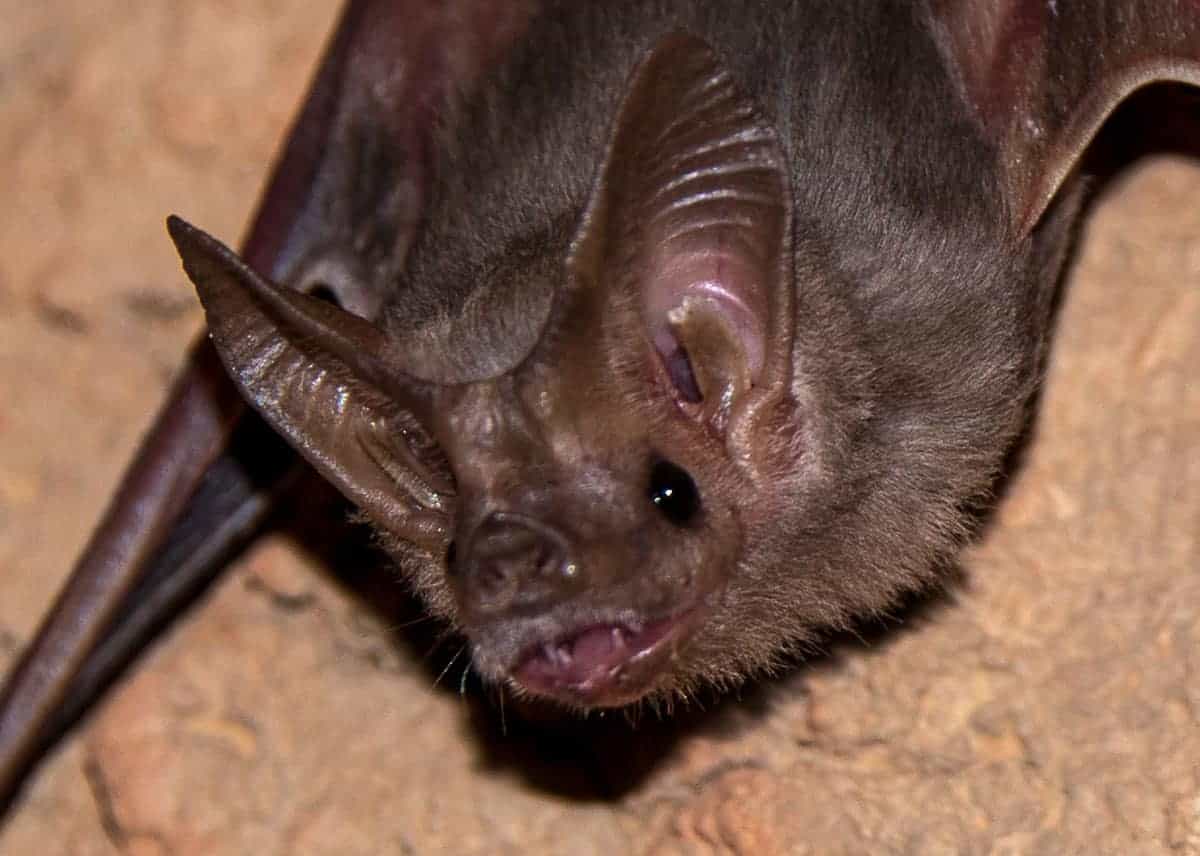
More reading: Guide to 47 Amazon Rainforest Animals
Your Turn
As you can see from reading these vampire bat facts, there’s so much more to these creatures than most people realize. They are so small and mysterious, yet they are actually complex animals with really cool abilities and sweet, caring social traits.
Which of these facts surprised you the most? Let us know your thoughts in the comments section!







I was surprised that they only give birth to one pup at a time, as their numbers are so immense.